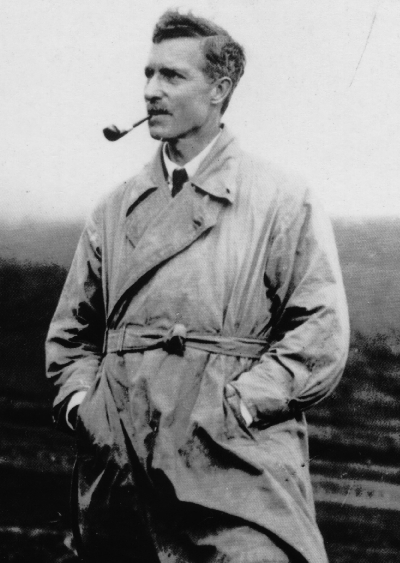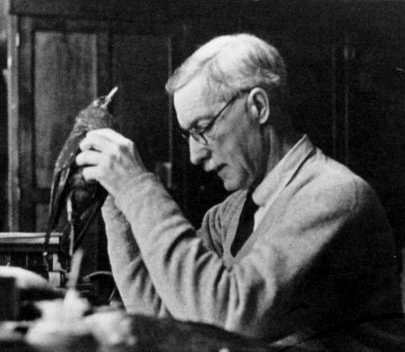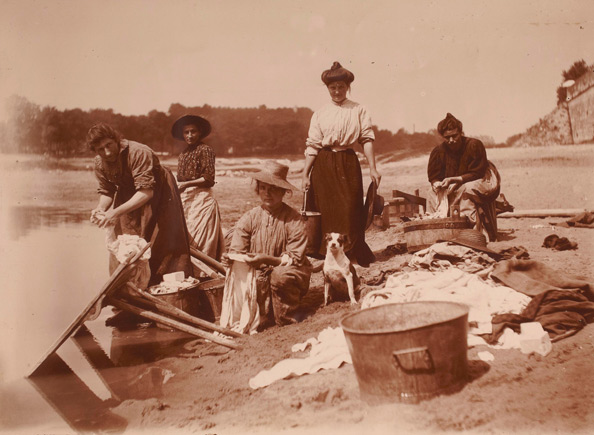MUSEUM MYSTERIES
BY: CHRISTOPHER WAI
But in any case, here are 6 more cases :
6. Colonel Meinhertzhagen's Reappearing birds- Natural History Museum (London)
 |
| Left to Right: Dr. Schneider, Dr. Brody and Dr. Jones conducting object research. Source; Indiana Jones and the Last Crusade (1989) |
Perhaps it's just some sort of ironic fate, providence or coincidence that between parts 1 and 2, I've found myself looking for things in storage between tasks on and off for the some of the same reasons I mentioned in my intro last time.
6. Colonel Meinhertzhagen's Reappearing birds- Natural History Museum (London)
 |
| Meinertzhagen in 1922 Source |
Colonel Meinertzhagen is a strange and increasingly unscrupulous character in early 20th century history.
Amongst other things, he served as a British officer in the African and Middle Eastern fronts during the First World War, has claimed to have met Hitler in the '30s (only to apparently regret not using his loaded gun) and may have murdered his wife, who apparently shot herself in a “shooting accident”. His two most infamous associations are his 'haversack ruse'; where he allegedly dropped misleading battle plans that lead to a key victory at Beersheba and assassinating a Kenyan leader revolting against colonial rule under the guise of a truce (they were about to shake hands to be specific apparently) before stealing the his staves representing Nandi tribal leadership (repatriated in 2006).
He was also an avid ornithologist throughout his life-so much so that he donated a large collection of around 20 000 bird specimens to the Natural History Museum in London (amongst other institutions) and allegedly mined someone else's unpublished manuscript for his own.
Amongst other things, he served as a British officer in the African and Middle Eastern fronts during the First World War, has claimed to have met Hitler in the '30s (only to apparently regret not using his loaded gun) and may have murdered his wife, who apparently shot herself in a “shooting accident”. His two most infamous associations are his 'haversack ruse'; where he allegedly dropped misleading battle plans that lead to a key victory at Beersheba and assassinating a Kenyan leader revolting against colonial rule under the guise of a truce (they were about to shake hands to be specific apparently) before stealing the his staves representing Nandi tribal leadership (repatriated in 2006).
He was also an avid ornithologist throughout his life-so much so that he donated a large collection of around 20 000 bird specimens to the Natural History Museum in London (amongst other institutions) and allegedly mined someone else's unpublished manuscript for his own.
 |
| "Richard H. Meinertzhagen working with museum specimens" Source |
The problem, as researchers Pamela Ramussen and Robert Prys-Jones began to discover in the 1990s, was that it a number of the specimens donated were actually missing specimens that came from other collectors and institutions. In other cases, their location of origin was changed.
This has had wider implications beyond plagiarism and theft as it calls into question any study using these specimens and the alleged context associated with them or any later research that cite those studies.
This has had wider implications beyond plagiarism and theft as it calls into question any study using these specimens and the alleged context associated with them or any later research that cite those studies.
7. Completing the Book of the Dead- Queensland Museum
 |
| Dr. John Taylor Source: Daily Mail |
Other fragments of this copy had been known to have been proverbially scattered across the globe between collections at the British Museum, Boston's Museum of Fine arts and the Met. It seems the Queensland Museum had unknowingly been conserving them for almost a century since their initial donation.
8. Salieri and Mozart in Czech -National Music Museum, (Czech Republic)
 |
| The libretto Source |
So it was odd when it was announced last February that a joint composition of a libretto was found by German composer Timo Jouko Hermann while looking for compositions by Salieri's students.
The exact story behind their relationship remains unknown, but its an interesting new clue, though its also further fuelled existing theories about Mozart being poisoned by his rival.
9. Sherlock Holmes' early film adventures- Cinémathèque Française
Ever seen Sherlock Holmes with a Calabash pipe?
As many Sherlockians/ Holmesians (myself included) might like to tell people in their long lectures on trivia of every little bit of minutiae or myth about the great detective's life, Conan-Doyle never actually described him ever owning a calabash pipe.
 |
| William Gillette on stage as Holmes Source |
 |
| Gillette's Holmes doing lab work in the 1916 film. Source |
10. “...the single baby born in Auberive...” -Art Gallery of Ontario
 |
| Source AGO |
In 2011, MMSt alum Vanessa Fleet interned at the AGO managed to trace the origins of a collection of 1,702 photographs to a photographer who's identity had never been known and garnered little, if any reputation.
All she had to go on was a single line written on the back of one photograph: "Auberive-Avenue de l'Abbatiale-where I was born, 16 March 1839.".
As luck would have it, there was only one baby born that day, listed in the parish records at the town of Auberive- Abel, Boulineau.
He was a photographer, a painter and he taught in Paris at the Association Polytechnique. In the summers, he travelled across rural France taking photographs, many of which inspired his paintings.
11. "War Trophies"-"Curios"-Indigenous Heritage Looted from Villages- Melbourne Museum
 |
| "Australian Native Affairs staff brandishing New Guinea spears and shields" Source |
Here's a case study in museum ethics, colonialism and more to add onto the dissonance of the First World War.
To summarize Dr. Christine Winter's research on war trophy collecting in the region:
When the First World War began in 1914, Australian forces quickly took over the Northern, German half of the then colonies of Papua New Guinea in a number of weeks. This occupation would last until 1975.
The war had yet to become the nightmare that it eventually became and many soldiers celebrated with “war trophies” from the Germans and much like the German colonials before them, took numerous objects from the indigenous peoples of Papua New Guinea.
Shop windows that would later have memorials dedicated to the dead held many of these objects that the soldiers forwarded to their families.
In the scramble during and then after the war to create war museums with these war trophies, the Australian Government took to the idea of collecting “native curios” and in one instance, sent an armed expedition that took the “strategy” of shooting near the villagers to scare them out before looting and burning the village.
The greatest irony is that these objects were never displayed after they were collected because they were not deemed “war trophies” but “curios” and sent from the war museum to the Museum Victoria, boxed and forgotten until 1997, when Curator Ron Vanderwal and dr. Barry Craig rediscovered them during the museum's move to a new building.
Today, there is a refocusing on its value as a part of Papua New Guinea's heritage, though they have yet to be repatriated.
Conclusion
So who knows what you might find somewhere down the line, maybe even as an intern. Maybe that old set of neglected boxes that you need to rehouse is important. The old catalogue records in illegible cursive scrawl from a century ago or assorted papers stacked in a filing cabinet might not be so boring after all.
Maybe its something that's in the galleries. Perhaps you'll fix a misattribution that recontextualizes an object completely. You may also need to find answers to the troubled histories of where your rediscovery came from and what will be done with them in the future.
Of course, it's probably better to keep your records in order and do object research so that this doesn't happen to you...
Good luck!
 |
| Dr. Brody, Curator of the National Museum leading the charge Source: Indiana Jones and the Last Crusade (1989), Paramount. |


No comments:
Post a Comment
Note: only a member of this blog may post a comment.